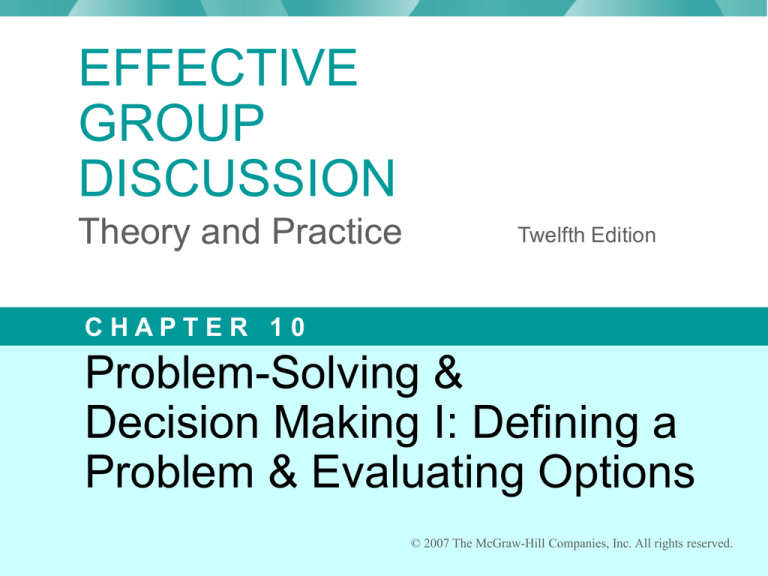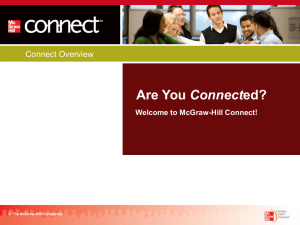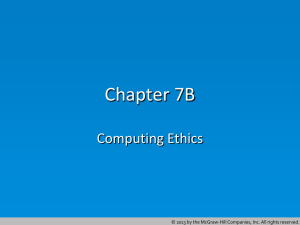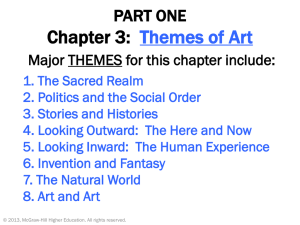
EFFECTIVE
GROUP
DISCUSSION
Theory and Practice
Twelfth Edition
CHAPTER 10
Problem-Solving &
Decision Making I: Defining a
Problem & Evaluating Options
© 2007 The McGraw-Hill Companies, Inc. All rights reserved.
Chapter Content
Problem Solving & Decision Making
Group versus Individual Problem Solving &
Decision Making
Factors Affecting Quality of Group Outputs
Need for Structure in Group Problem Solving
Problem-Solving Guidelines
Procedural Model of Problem Solving, Steps
One through Three
© 2007 The McGraw-Hill Companies, Inc. All rights reserved.
Problem Solving &
Decision Making
Problem
Problem solving
Decision making
© 2007 The McGraw-Hill Companies, Inc. All rights reserved.
Group versus Individual Problem
Solving & Decision Making
Advantages of groups:
Assembly effect
Better decisions
Compensation for others’ weaknesses
Ability to process more information
Different perspectives on a problem
Greater acceptance of a decision
Satisfaction of belonging & affection needs
Continued
© 2007 The McGraw-Hill Companies, Inc. All rights reserved.
Group versus Individual Problem
Solving & Decision Making
Disadvantages of groups:
Longer time to make decisions
Pressure to conform from group members
Strained relationships among members
© 2007 The McGraw-Hill Companies, Inc. All rights reserved.
So, when is it worth the trouble?
Solution Multiplicity
Population Acceptance
Sufficient Time
© 2007 The McGraw-Hill Companies, Inc. All rights reserved.
Factors Affecting
Quality of Group Outputs
Input factors
Type of task
Conjunctive
Disjunctive
Abilities of members
Integrative complexity
Need for cognition
Continued
© 2007 The McGraw-Hill Companies, Inc. All rights reserved.
Factors Affecting
Quality of Group Outputs
Throughput factors
Communication among members
Full group member participation
Group’s climate
© 2007 The McGraw-Hill Companies, Inc. All rights reserved.
Intuitive Problem-Solving
Steps …
Conception
Preparation
Incubation
Illumination
Verification
“Trust but Verify”
Graham Wallis’ approach
© 2007 The McGraw-Hill Companies, Inc. All rights reserved.
Need for Structure in
Group Problem Solving
Without structure, groups:
Move randomly between ideas
Produce lower quality output
Continued
© 2007 The McGraw-Hill Companies, Inc. All rights reserved.
Need for Structure in
Group Problem Solving
Organized problem-solving discussions
allow groups to:
Balance participation
Improve reflectiveness
Coordinate group members’ thinking
Establish important ground rules for
proceeding
© 2007 The McGraw-Hill Companies, Inc. All rights reserved.
Functional Perspective
Communication influences the quality
of solutions
Guidelines
© 2007 The McGraw-Hill Companies, Inc. All rights reserved.
Functional Perspective
Task requirements for groups to
succeed:
1. Understand the issue
2. Determine minimal characteristics of
acceptable alternatives (Criteria)
3. Determine relevant and realistic
alternatives
4. Examine the alternatives
5. Select the best alternative
© 2007 The McGraw-Hill Companies, Inc. All rights reserved.
Problem-Solving Guidelines
Procedural Model of Problem Solving
(P-MOPS)
Single Question Format
Ideal Solution Format
Continued
© 2007 The McGraw-Hill Companies, Inc. All rights reserved.
Procedural Model of Problem
Solving (P-MOPS)
General model
Major steps:
1. Problem description & analysis
2. Generating & elaborating on possible
solutions
3. Evaluating possible solutions
4. Consensus decision making
5. Implementing the solution chosen
© 2007 The McGraw-Hill Companies, Inc. All rights reserved.
Single Question Format
Less-structured
Major steps:
1.
2.
3.
4.
5.
Identify the problem question
Create a collaborative setting
Identify and analyze the issues
Identify possible solutions
Resolve the single question
© 2007 The McGraw-Hill Companies, Inc. All rights reserved.
Ideal Solution Format
Major steps:
1.
2.
3.
4.
Identify the nature of the problem
Identify the ideal solution
Identify the conditions that must change
Select the most ideal solution
© 2007 The McGraw-Hill Companies, Inc. All rights reserved.
Comparison of Problem-Solving
Guidelines
Figure 10.1 Comparison of the Questions Addressed by Three Problem-Solving
Guidelines
© 2007 The McGraw-Hill Companies, Inc. All rights reserved.
Step 1 of P-MOPS:
Problem Description & Analysis
1A: Understand the charge and area of
freedom
1B: Understand the type of question to
be addressed
Question of fact, value, conjecture, or policy
1C: Focus on the problem
Continued
© 2007 The McGraw-Hill Companies, Inc. All rights reserved.
Step 1 of P-MOPS:
Problem Description & Analysis
1D: State the problem appropriately
Solution questions versus problem questions
1E: Map the problem
Use the problem census to discover
problems
© 2007 The McGraw-Hill Companies, Inc. All rights reserved.
Step 2 of P-MOPS: Generating &
Elaborating on Possible Solutions
2A: Identify as many good ideas as you can
Use brainstorming to discover alternatives
2B: Defer judgment during discussion to
identify options
2C: Discuss criteria for evaluating solutions
Absolute and relative criteria
© 2007 The McGraw-Hill Companies, Inc. All rights reserved.
Step 3 of P-MOPS:
Evaluating Possible Solutions
3A: Establish a collaborative climate for
evaluation
3B: Establish norms that promote
critical thinking
Identify negatives about all possible
solutions
Continued
© 2007 The McGraw-Hill Companies, Inc. All rights reserved.
Step 3 of P-MOPS:
Evaluating Possible Solutions
Evaluate information
Distinguish between facts and inferences
Evaluate survey and statistical data
Evaluate the sources and implications of
opinions
Continued
© 2007 The McGraw-Hill Companies, Inc. All rights reserved.
© 2007 The McGraw-Hill Companies, Inc. All rights reserved.
Statements of Fact &
Statements of Opinion & Inference
Figure 10.4 Comparing Statements of Fact and Statements of Opinion and
Inference
© 2007 The McGraw-Hill Companies, Inc. All rights reserved.
Step 3 of P-MOPS:
Evaluating Possible Solutions
Evaluate reasoning -- Fallacies
Overgeneralizing
Ad hominem attacks
Suggesting inappropriate causal
relationships
False dilemmas
Faulty analogies
Precedent
© 2007 The McGraw-Hill Companies, Inc. All rights reserved.
Step 3 of P-MOPS:
Evaluating Possible Solutions
Criteria for evaluating information and
reasoning from the Internet:
Accuracy
Credible authority
Audience
Purpose
Recency
Coverage
© 2007 The McGraw-Hill Companies, Inc. All rights reserved.
Notes on Chapter 10
Whatever outline you use, you first must
achieve a thorough understanding of
your problem.
The more good quality options you
generate, and the more thoroughly and
objectively you evaluate them, the
better your group’s chance of achieving
the best solution.
© 2007 The McGraw-Hill Companies, Inc. All rights reserved.










